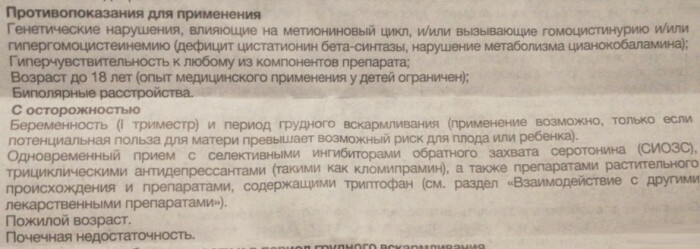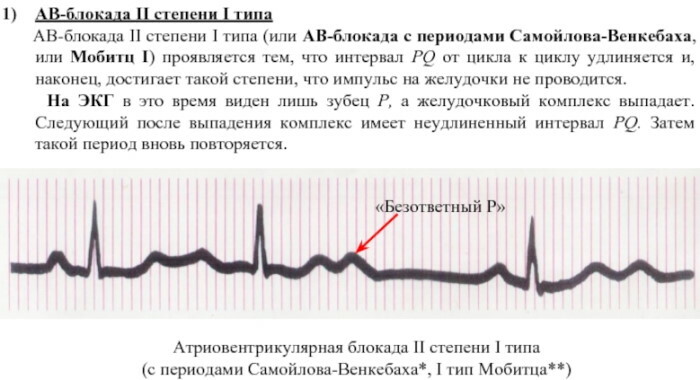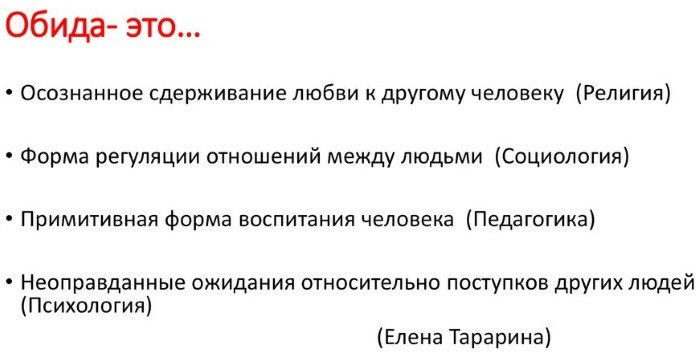Content
- Views
- Stages and degrees
- Symptoms and Signs
- Causes
- Diagnostics
- Treatment methods
- Non-drug treatment
- Drug treatment
- Surgery
- Potential consequences and complications
- Video about ectasia of the pelvic veins
Varicose veins of the small pelvis (abbreviated as VVMT) also called ectasia, with the development of which blood flow is disturbed in both the internal and external genital organs. Patients suffering from this pathology complain of swelling, pain and bleeding.
VRVMT occurs against the background of a violation of the architectonics of the pelvic veins. This leads to stagnation of venous blood, which is retained in the small pelvis. Also, such a deviation can be called varicocele and it develops in women. According to statistics, most often patients suffer from pathology during menopause.
But girls under the age of 17 are also at risk, since in almost 20% of cases, VVMT develops at a young age, when changes in the body occur. The risk of developing pathology increases during the reproductive period, from 25 to 45 years. In most situations, such varicose transformations affect the ovarian veins. Only in 1% of cases, changes affect the veins of the broad ligament of the uterus.
Views
Pelvic vein ectasia is of two forms:
- varicose veins of the vulva, as well as the perineum;
- varicose congestion syndrome.
In more than 50% of cases, both forms occur simultaneously. The vulvar and perineal type of varicose veins are caused by blood reflux, against the background of which the external genital vein is damaged. This often happens in women after labor. In most situations, over time, the pathology goes away on its own, and only 2-10% of women require further treatment.
Stages and degrees
There are 3 degrees of how pronounced the developing varicose veins in this area. This takes into account the diameter of the dilated vessels, as well as the location of ecstasy.
| BPVMT degree | Description |
| I | The diameter of the vessels is less than 0.5 cm. The so-called coiled course is noted. The initial lesion can affect any venous plexus in the pelvic area. |
| II | The diameter of the vessels increases to 0.6-1.0 cm. This type of defeat is considered total. This means that a large area is affected, which may include the ovarian plexuses, parametric and arcuate veins. |
| III | The diameter of the vessels exceeds 1 cm. Varicose veins are classified as total or main. |
Also, the doctor determines the stage of development of the pathology, depending on the nature of its occurrence.
VRVMT can be:
- Primary. This means that the pathology develops due to valvular insufficiency of the acquired or congenital type. For example, complications during pregnancy or labor could lead to primary ectasia. Pathology can develop from constant strong physical exertion or when a woman takes hormonal-type drugs for a long time.
- Secondary. This form of ectasia occurs against the background of protracted gynecological diseases. For example, secondary VVMT is diagnosed with endometriosis or with the growth of tumor formations.
Symptoms and Signs
During ecstasy, the pelvic veins expand, and blood begins to flow virtually in the opposite direction from the heart. The expansion is located near the ovaries, bladder, rectum. This means that there is pressure on these organs.
Accordingly, the patients complain of the following symptoms:
- frequent aching pains in the lower abdomen;
- discomfort with intimacy;
- a pulling feeling in the pelvic area;
- stress incontinence;
- intestinal irritation.
Pain syndrome is the most common manifestation of ectasia and can last up to six months. In this case, pain can occur both on one and on both sides. The unpleasant sensations intensify when the patient gets up, climbs stairs or walks for a long time.

The syndrome is more noticeable in the process of carrying a child, during or after intercourse. The intensification of symptoms can also be influenced by the day of the menstrual cycle, a change in hormonal levels. As soon as the woman takes a comfortable horizontal position, the pain disappears.
But not all patients show just such symptoms. For some, pain and other unpleasant sensations appear only during pregnancy, and then varicose veins can proceed for a very long time without symptoms.
Causes
Ectasia of the pelvic veins develops against a background of various reasons. The main one is pregnancy, when the uterus greatly increases in size in a relatively short time. This causes the underlying veins to be compressed.
In addition, when carrying a child, hormonal changes occur, the volume of circulating blood increases. However, not all women planning pregnancy should be wary of developing ectasia. Expansion of veins occurs only in 30-40% of cases, and in most situations the body itself recovers after the birth of a child.
Other reasons for the development of BPHMT include:
- Hypodynamia. Deviation is diagnosed in those people who lead a predominantly sedentary lifestyle or, conversely, spend the whole day on their feet. This leads to impaired venous outflow and subsequent stagnation of blood. The valves that are located in the dilated veins are no longer able to fit tightly and block the ducts. Against the background of attraction, the blood is directed downward, it thickens. This provokes ectasia, there is a risk of further development of thrombosis.
- Gynecological pathologies. To treat such diseases, doctors often resort to drug therapy using hormone-containing drugs.
- Smoking. An especially bad habit is dangerous if a woman is taking hormonal contraceptives. In the process of smoking, the blood thickens. Taking medications leads to the same effect. This double exposure increases the risk of thrombosis. There are cases when women died in such situations.
- Overweight. With obesity, the load on the vessels and the entire body as a whole always increases, which can lead not only to VVMT, but also to many other pathologies.
- Hereditary predisposition. For example, patients whose parents suffered from collagen diseases are more likely to be diagnosed with ectasia. This is especially true of pathologies during which damage to connective tissue type occurs, as well as fibers that contain collagen.
- Pathologies in which the pressure inside the peritoneum increases. For example, VVMT can develop in diseases of the upper respiratory tract, constipation. Ectasia affects patients who prefer strength sports training.
Ectasia can be diagnosed with various anomalies in the development of the venous system. For example, such a complication appears with venous dysplasia. At risk are patients who have suffered thrombotic lesions in the inferior vena cava.
Even an unfavorable environment can provoke a deviation. If people live close to a manufacturing or waste processing factory or near others objects that heavily pollute the air, there is a possibility of developing various abnormalities, including injury veins. Therefore, with prolonged pain syndrome, it is imperative to consult a doctor and conduct an examination.
Diagnostics
Vein ectasia that develops in the small pelvis requires treatment. Therefore, it is important to visit a gynecologist and undergo a routine check-up. After that, the doctor directs the patient to scan the OMT, as well as the veins of the legs. CT scan of the pelvis is performed, phlebography and laparoscopy can be performed. If the gynecologist suspects VEMI, he should also consult with a phlebologist.
In the process of external examination of the genitals, the specialist discovers a clearly visible enlargement of the veins in the area of the perineum and vulva itself. A vaginal examination is also required. During it, cyanosis can be detected. Additionally, palpation of the abdominal cavity is performed, since during VVMT, when pressing on the abdomen, severe pain appears.
To confirm this type of ectasia, sonography is performed, during which the pelvic organs are examined. The most informative diagnostic method is a combined study of ultrasound and TA + TV. Although organic pathologies are not detected by this method, in the CDC mode it becomes possible to determine the presence of conglomerates of varicose veins and changes in blood flow.
During the ultrasound scan of the vessels, the doctor determines the likely decrease in the peak activity of blood movement in different types of veins (uterine or ovarian). Additionally, it is advisable to conduct angioscanning using ultrasound. This will determine the patient's phlebological status.
In the course of diagnostic measures, it is required to determine in which zone the expansion occurred, and also to clarify its prevalence. At the same time, the doctor can detect blood clots. For this, it is recommended to perform a trans-uterine phlebography.
If the doctor suspects venous plethora, then he issues a referral for selective ovarycography. During the procedure, a special contrast is injected into the ovarian veins and the doctor receives a detailed picture. Additionally, the contrast can be injected into the veins of the perineum.
Now, instead of contrast radiography, CT is often used. This research method is considered less unpleasant, and its informativeness is the same as that of outdated examination methods.
The cost of diagnostics depends on what kind of activities are required to identify ectasia. If the doctor is limited to minimal procedures, then the price can range from 2,000 to 5,000 rubles. A deeper examination will cost 10,000-12,000 rubles. You can reduce costs if you go to a polyclinic for registration. In this case, the main set of activities is free of charge, but you may have to wait.
Treatment methods
Ectasia of the pelvic veins responds well to treatment if the patient applied for diagnosis in a timely manner. There are several methods that are used, depending on the shape and intensity of the VMST flow.
Non-drug treatment
This type of treatment includes:
- Fight against hypodynamia. If the patient leads a sedentary lifestyle or constantly stands on her feet, the doctor will prescribe exercises that will eliminate stagnant conditions.
- Rejection of bad habits. Since smoking and drinking alcohol negatively affects the state of blood vessels, the patient needs to give up such habits. This is especially true for pregnant women and those taking hormone-based drugs.
- Use of special compression garments. These are special support legends or tights, the wearing of which improves venous outflow.
- Using more comfortable shoes. A woman should give up high heels and tight shoes.
- Diet. With the development of ectasia, you need to abandon salty, fried and spicy foods. Such foods help to maintain fluid retention in the body. Because of this, swelling appears, pressure rises, which worsens the outflow of venous blood. Instead, you should include more fiber-rich foods in your diet and eat more fruits and vegetables.
Also, non-drug treatment includes a contrast shower, which should be primarily directed to the thighs and lower abdomen. All these activities can also be classified as preventive.
Drug treatment
If the pathology does not lend itself to conservative treatment, then the doctor may prescribe the following drugs:
-
Detralex. This drug belongs to the group of phlebotonics, which improve the tone of the veins, reduce their permeability. The main active ingredient of the drug is diosmin. Detralex is allowed to be taken during pregnancy, but only with the permission of a doctor. Although studies have not revealed the toxicity of the drug, any medication must be taken very carefully during this period. Usually the dosage is 1 tablet to be taken with breakfast. The course of treatment can range from 2-3 months to a year. Re-treatment can be carried out after a pause and if the doctor insists on it. But more often, when symptoms reappear, another similar drug is prescribed. The cost of Detralex is 800-1500 rubles.
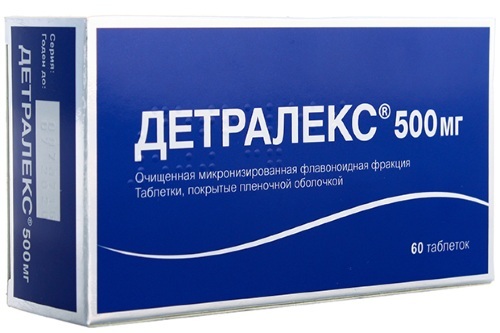
- Aescusan. It is a horse chestnut extract that helps to relieve puffiness and inflammation. The drug also has a tonic effect on the veins and inhibits degenerative processes in the walls of blood vessels. Since the extract contains alcohol, it is not recommended to take it during pregnancy or while breastfeeding a baby. In other situations, the dosage is 12-15 drops, which must be diluted with a small amount of water and taken three times a day. The course of treatment lasts until the pain and other unpleasant sensations disappear. The cost of the drug is approximately 150-300 rubles.
- Troxevasin. The drug improves blood outflow, increases venous tone, reduces inflammation and relieves puffiness. Troxevasin is produced in the form of a gel, so it can be used during pregnancy, but in no case should the agent be applied to the mucous membranes. The gel should be applied twice a day to the area where pain is felt. Compression garments can then be used. The course of use of the drug is 2 weeks. If, after this period, pain persists, then a doctor's consultation is required, who will decide whether to continue using the gel. The drug costs about 260-310 rubles.
Additionally, it is recommended to take vitamin C. It helps to strengthen the vascular walls, making them more elastic.
Surgery
Stage III pelvic vein ectasia may require surgery. Also, such treatment is prescribed if medical methods have not yielded any result. As a rule, measures are taken to restore the patency of the veins.
In this case, the varicose enlarged areas are removed. The procedure can be performed using a variety of methods, including laparoscopic. But in all cases, anesthesia is required, which has its own contraindications and consequences. Also, surgical intervention does not exclude the likelihood of relapses and the development of possible complications.
One of the options for surgical intervention is embolotherapy. This is a relatively new and gentle method that allows you to correct the functioning of the venous system. The principle of the intervention is that special occluding coils are inserted into the veins. The procedure takes very little time, and recovery is much faster (when compared with other methods).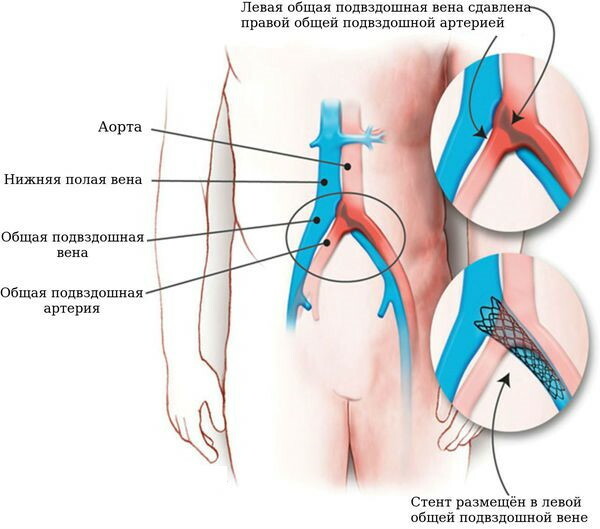
Embolotherapy has several significant advantages:
- Efficiency. Complete recovery is observed in 94.8% of cases. Relapses do not occur, and patients return to their normal life very quickly after such a surgical intervention.
- The speed of the operation. The procedure takes no more than half an hour. The patient may then be asked to stay in the hospital for several hours. But more often than not, you can go home immediately after the procedure.
- No need to administer general anesthesia. This is one of the most significant advantages. Local anesthesia is sufficient during the procedure. Before surgery, the damaged vein is treated with local anesthetics. It also allows the patient to recover from the event much faster.
This is a relatively simple procedure, so the risk of the doctor making a mistake is greatly reduced.
After surgery, patients are advised to follow a few simple guidelines:
- Drink more water throughout the day. This is an important condition.
- Refuse increased physical activity. For several weeks after the procedure, you cannot go in for sports, lift weights, or stand on your feet for a long time.
- Refuse to visit swimming pools, saunas, baths. For the first week after the operation, it is also worth refusing to swim in water bodies and stay on the beach for a long time. You can take a shower as usual.
Potential consequences and complications
If VVMT comes from a neglected degree and turns into a pathology of a chronic type, then relapses will constantly occur (each time more and more intense). With varicose veins of the small pelvis, the genitals are constantly overfilled with blood, this leads not only to stagnation, but also to tissue hypoxia. Violation of the process of outflow of venous blood provokes thickening of the walls, adhesions appear on the vessels that connect them to the peritoneum, as well as the nerves located nearby.
Gradually, the woman complains of more severe pains that become unbearable. In such a situation, the patient can no longer lead the usual way of life and is forced to spend more time in a horizontal position and take painkillers. It also affects sexuality, since sexual intercourse is impossible due to severe pain.
If treatment has not begun, then this will lead to a serious increase in the veins of the ovaries, and sclerosis of the vascular walls will develop. This provokes even greater venous congestion. Accordingly, this will affect the reproductive system.
Another danger is that against the background of VVMT, the likelihood of thrombosis, thromboembolism, and thrombophlebitis increases. Slightly less often, women suffer from hormonal disorders. Uterine bleeding, chronic inflammation of the reproductive or urinary system may appear. This is extremely dangerous during pregnancy, as there is a high probability of miscarriage. Ultimately, the woman may be diagnosed with infertility.
If VVMT begins to develop directly during pregnancy, then it is dangerous both for the patient herself and for the child. With the progression of the pathology, in most cases, children are born prematurely. This means that there is a risk of various deviations. Children may be underweight, and some internal organs may be underdeveloped. This is especially dangerous if the respiratory system is not fully formed.
This condition is also dangerous during labor. When a child passes through the birth canal, the already thinned vascular walls can easily be damaged. This is dangerous with very heavy bleeding of an uncontrolled type. In the most difficult situations, there is a possibility of death. Therefore, if you suspect a rapidly developing VVMT, doctors usually recommend a cesarean section, which allows you to reduce, but not exclude the risks.
Thus, vein ectasia developing in the small pelvis is a dangerous condition only if the patient does not seek treatment in a timely manner and becomes pregnant. By itself, VVMT is not life-threatening, but only if treated promptly.
After it, you need to periodically undergo an examination so that the doctor can exclude relapses. However, initial treatment usually leads to a complete recovery, so the prognosis is mostly positive. To eliminate the risk of developing a deviation, it is recommended to adhere to a healthy lifestyle, quit smoking, and exercise.
Video about ectasia of the pelvic veins
Varicose veins of the small pelvis:

